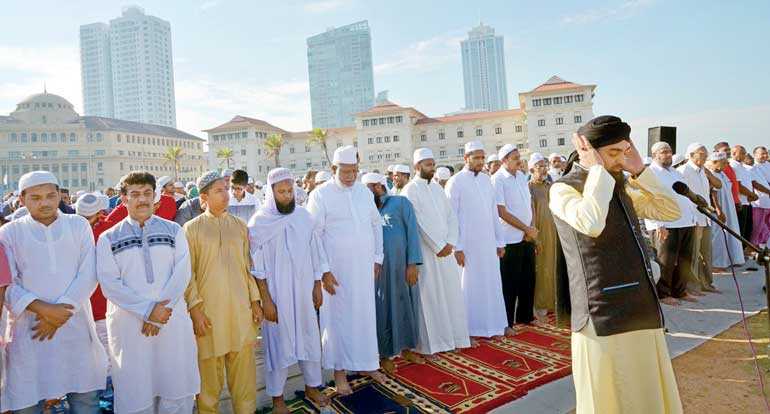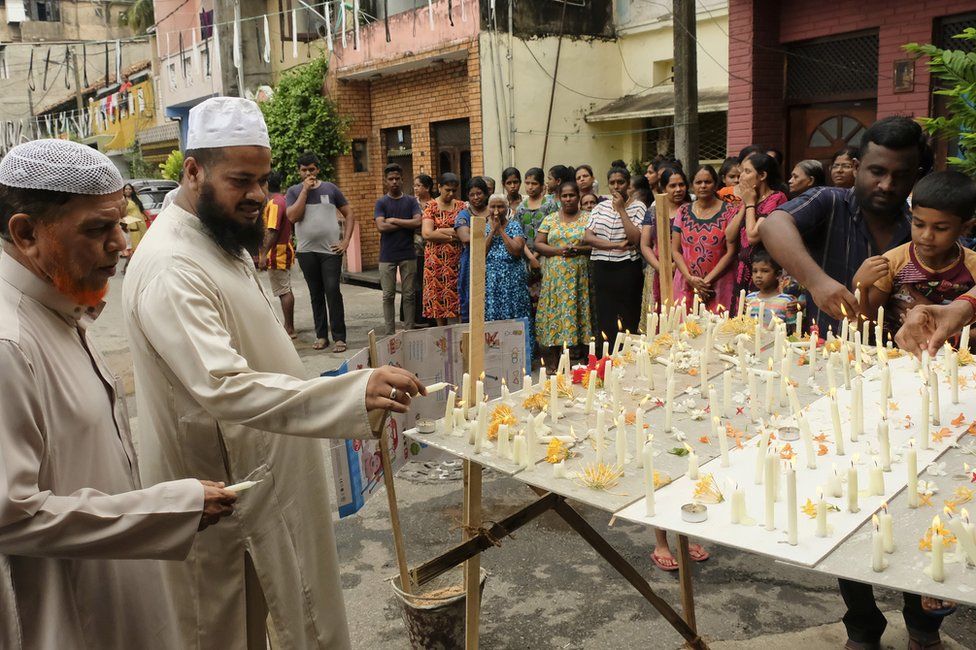The Republic of Sri Lanka is located in the northern Indian Ocean, south of the Indian subcontinent, off the southern coast of India shares maritime borders with it from the northwest. It is bordered by the famous Maldives islands to the southwest; thus, it has a long history of colonization and transition from one European power to another.
Among these historical changes was the entry of Islam, which is currently the third largest religion in Sri Lanka after Hinduism and Buddhism, so how did Islam enter it and become one of its prominent religions? This is what we will know in our following report.
Ancient Sri Lanka
According to anthropologists, geologists, and archaeologists, Sri Lanka has been inhabited by humans for 75 to 125 thousand years, with evidence confirming the presence of tribes and settlements of pastoralists and food gatherers in the early Stone Age. The first evidence of civilization in Sri Lanka dates back to 500 BC, when a small group of Sinhalese people (some sources mention their number as 700 people led by the first Buddhist leader Vijaya) arrived in Sri Lanka, where they spread the principles of Buddhism from 300 to 260 BC.
Early civilizations continued to develop in Sri Lanka after the birth of Christ, the most prominent of which was the civilization of “Polonnaruwa,” which existed from about 1070 to 1200 AD. In the 14th century, an Indian ruling dynasty seized power in the northern region of the country and established a kingdom known as “Tamil” there, with most of its citizens being immigrants from Indian territories, while the Sinhalese settled in the south.
Islam Enters through Trade
Before European colonial attention turned to the land of Sri Lanka, Sri Lanka (also known as Taprobane) was known for being an important center for global trade in ancient times and was even one of the stations of the famous Silk Road historically known by most Arab traders in the first centuries AD.

With the increasing influx of Arab traders to Sri Lanka in the sixth and seventh centuries AD, Islam began to flourish there, and Arab traders called it by its ancient Arabic name “Serendib.”
The presence of Islam spread through trade, commerce, and intermarriage with its people, and by the eighth century AD, Arab traders dominated a significant and large part of trade in the Indian Ocean. Certainly, the island of Serendib was one of the most prominent destinations for Arab traders, and many of them preferred to settle on the island, which encouraged the natural spread of Islam, rather than through Islamic conquests. During that period, trade between Muslim traders and Asian countries flourished greatly.
Sri Lanka or Serendib in Arab-Islamic History
Among the most prominent references to Serendib, or Sri Lanka, in history is its mention in the book of the geographer and traveler Muhammad al-Idrisi’s “Nuzhat al-Mushtaq fi Ikhtiraq al-Afaq” (1100-1164 AD), where he described its king as extremely wealthy, owning what no other kings of India owned (ships from China and other neighboring kingdoms dock there), as well as describing the riches of Serendib such as jewels, rubies, silk, crystal, diamonds, perfumes, and various precious stones found in the landmarks of the island.
Al-Idrisi also described the governance system established by a king, whom he described as rich and just, appointing four ministers from among the Muslims, the Christians, and the Jews, as well as followers of the local religion of the king, Buddhism, and it became customary to appoint Muslim advisors to the kings of the island before the European colonial era.
Also mentioned Serendib (also known as Ceylon) by the historian, traveler, and author Yaqut al-Hamawi, who lived between the years (1178 – 1225 AD) in his famous book (Mu’jam al-Buldan), and among what al-Hamawi mentioned about “Serendib” is that the mountain on which Adam – peace be upon him – descended to earth is located in Serendib, and he described it as “Mount Harun,” and added that it has a footprint of “Adam” submerged in the stone “about seventy cubits long, and they claim that it was the step of the other foot in the sea, and it is from him on a journey of a day and a night.”

Serendib was so beautiful that poets sang about it, and among the most prominent who described Sri Lanka or Serendib’s beauty were the verses of Imam al-Shafi’i:
Rain pearls on the mountains of Serendib – and the flow of Tabrobane wells
European Colonization and the Continuation of Islam
In the fifteenth century, European colonization began to advance towards Sri Lanka, starting with an attack by the Portuguese in 1505 when Portugal was the first European power to colonize the island.
When the Portuguese arrived, the descendants of Arab traders were the main traders of spices and precious stones, enjoying strong commercial influence extending to the Middle Eastern countries. The Portuguese coined the term “Moors” to describe the Muslims of the island, the same description used by the Portuguese and Spanish to describe other Islamic communities in Andalusia and the Maghreb, resulting in a local identity called “Moor Island of Ceylon” attributed to the Arabs, but Arabic is no longer their primary language today, but has shifted to the Tamil language.
After that, in the seventeenth century, Dutch colonization competed with the Portuguese in establishing their control over the island in 1638, because of the call for help from the king of Sri Lanka at that time to the Dutch, who were known to be the fiercest competitors of the Portuguese traders in Asia at that time – fearing that Portuguese dominance over the island would lead to the disappearance of his kingdom, and indeed Portuguese presence on the island ended in 1668.
But Sri Lanka did not settle until British ambitions began to notice the riches of this vital spot in Asia and its unique location in global trade, so British colonialism took control of the majority of the island in 1796, annexing it to Britain in 1802 as a British royal colony, and it was known during British colonization as the island of Ceylon, and the colonial era in it ended in 1948, transforming into the People’s Republic of Sri Lanka.
Today, Muslims constitute approximately 9% of the total population of Sri Lanka, and Islam is the third largest religion there, following Christianity at 7.4%.
Sunna Files Free Newsletter - اشترك في جريدتنا المجانية
Stay updated with our latest reports, news, designs, and more by subscribing to our newsletter! Delivered straight to your inbox twice a month, our newsletter keeps you in the loop with the most important updates from our website












